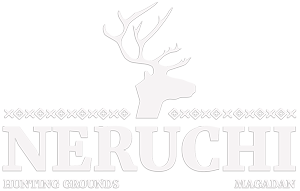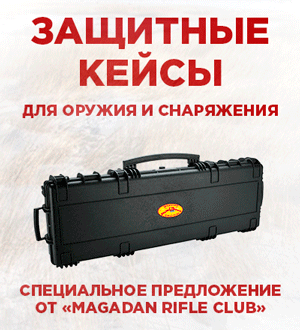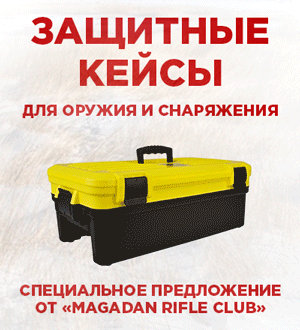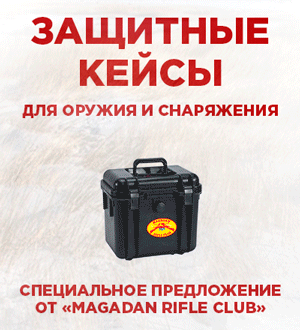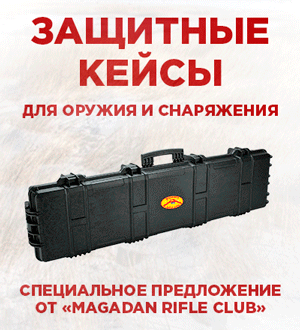Posted on March 31, 2017
How to preserve game meat
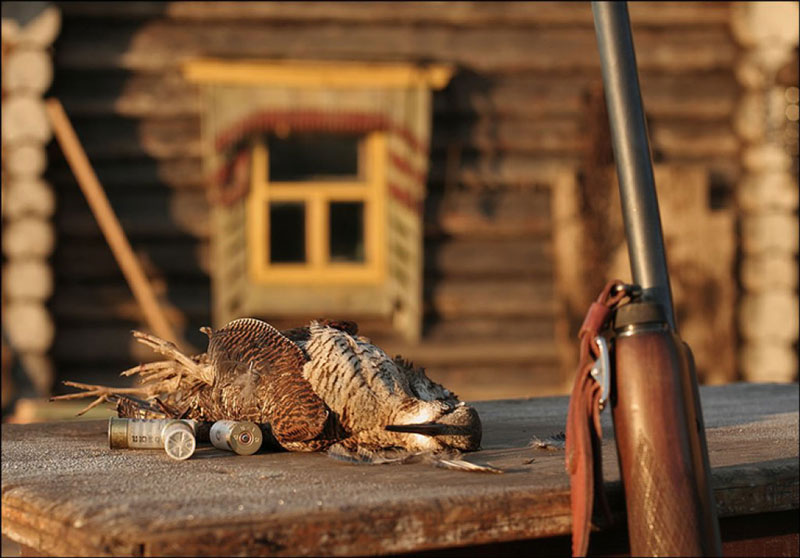
Even experienced hunters sometimes face a problem: how to save the game – especially this is true in warm spring and summer days.
Freezing
Freezing is the most used, simple and high-quality way of preserving products from meat of wild animals and birds. Its essence lies in the freezing of water, changes in tissue structure, microflora and the course of autolytic processes. The process of freezing muscle tissue looks like a process of freezing of tissue fluid. The initial freezing temperature of the tissue fluid is from -0.6 to -1.0 °C.
When the creoscopic point is reached, pure water begins to crystallize and the concentration of the remaining liquid phase simultaneously increases. The creoscopic temperature of the solutions depends on their concentration, as the freezing proceeds, the crystallization t of the liquid residues decreases. At a temperature of 1.5g. About 30% of water in the meat freezes, at -5 °C. – 75.6%, with – 10 °C. – 83.7, at – 20 °C. – 89.4%, with – 25 °C – 94.4%.
Cryohydrate temperature is t, at which the whole liquid freezes. It is below -55 ° C. The lower the temperature and the faster the freezing, the less the effects of freezing meat. The most harmful for microorganisms t in the range from -6 to -12 ° C, at -20 ° C, the volume of death of microorganisms decreases.
When choosing the method of storage and freezing of meat, the following factors must be taken into account first of all: the state of the meat, the volume and depth of freezing, the state of the environment, the presence or absence of contact of the product with the heat sink medium.
Preserving with salt
Salt contributes to the correct development of biochemical and autolithic processes that cause the ripening of meat. The salinity of the product is estimated by the content of NaCl to its mass.
1) Especially low-salinity product – 2-2.5% salt to the product mass.
2) Fresh-salted – up to 3%
3) Normally salty – up to 3.5%
4) Brackish – up to 4.5%
5) Salty – more than 4.5%
Salinity is affected by the moisture content of the product.
Salting the meat of wild animals is better without bones, cutting into pieces for 1.5-3 kg. Each piece is rubbed with salt and packed in rows in a container. Carcasses of feathered game are cut along the back to the skin of the abdominal part. They are laid down by the skin. The largest carcasses are stacked down. The packaging must be strong, clean and waterproof, oak and beech drums are best suited. Modes of salting: wet, dry, mixed and syringing.
Wet – pieces of the product are poured with brine, most often in this way salt boar meat. To prepare a brine for 100 liters. Water is taken 29kg. Salt. The reaction of the medium must be acidic – pH = 5.6-6.8
Dry – the product is sprinkled or rubbed with a dry mixture. In this way salt bacon, hams, sternum, offal, etc. are salted. The composition of the mixture: salt (NaCl), saltpetre (1.5% -2% by weight of salt), sugar (1.5-2% by weight of salt). The consumption of the mixture is from 8 to 18% of the weight of the product, depending on the purpose and strength of the brine.
Mixed – the product is processed with salting mixture and brine. This method is suitable for all types of meat, and using it produces the best quality meat. For meat of wild ungulates animals the following mixture is prepared: 100 parts of salt, 1.5 kg. Sugar, 0.8kg. KNO3. Consumption – 6-7% of the mass of meat. The mixture is rubbed into pieces of meat and left for 3-4 days. Then there is added a brine consisting of one salt. Duration of salting, at a temperature of 4-6 °C, is from 20 to 30 days.
Syringing – the brine is injected into the muscle through a syringe. It is usually applied before smoking. For 1 kg of meat, 60 cubic centimeters of brine brine is consumed. Meat is pre-cut into identical pieces. When the needle is injected, the needle is inserted so that the brine penetrates into the joints of the bones. The injections are produced in different places. For feathered game, a few sticks are enough. For example, for mallards, enough 4-5 injections.
Drying
The minimum humidity at which the development of microorganisms is 20-30%, for molds – 15%. Drying allows you to keep the product as a result of its dehydration, but it should be noted that this does not serve as its sterilization, many microorganisms are resistant to this process.
Dried products have a smaller volume and weight, and the amount of nutrients does not decrease. In most cases, dried products can not be used without pre-soaking. The drying process occurs under the following mechanisms: vaporization, vapor transfer to the external medium through boundary layers, moisture transfer inside the product.
Duration, intensity and quality of drying is determined by heat – and moisture exchange. It should be noted that during drying, some undesirable consequences may arise: the transfer of dissolved substances from within the product to its surface, when salt is used, a crystalline precipitate is often formed on the surface.
Drying of meat of wild animals and birds is carried out by the following methods: convective, conductive and sublimation.
Convective – drying of the product among the coolant (air).
Conductive – the transfer of heat to the product in direct contact with the heating surface.
Sublimation drying takes place at a temperature below freezing of the tissue fluid, in a discharged atmosphere and pressure.
For drying is more lean and lean meat is suitable, the presence of fat deteriorates the quality of the product. Meat is preliminarily separated from bones, fat and tendons. Then cut into small, thin pieces and salt.
Smoking
Smoking – impregnation of processed products with smoke. With this method, up to 25% of moisture is removed from the products, this leads to product shrinkage, salt concentration (NaCl). For the correct course of smoking it is necessary to maintain a certain temperature. When t +50 ° C and above, collagen welding and denaturation of proteins occur, at + 30-40 ° C, enzymatic processes begin to develop.
The smoked meat of wild animals and game birds is resistant to the action of putrefactive microorganisms. Before smoking you need to prepare the meat. To do this, it is divided into pieces, well salted and provides the possibility of hanging each piece. For smoking is not suitable lean, malopuvannaja, young, broken by a shot and stale game. Ways of smoking: cold and hot.
Cold – held at a temperature of 12 to 20 ° C not with thick smoke. The duration of the process for meat of elk, wild boar, bear and other mammals is 2-4 days. Feathered game is smoked at a temperature of 18 to 22 ° C, the duration for ducks is 24-34 hours, for geese 24-64 hours.
Hot – meat is processed by hot smoke at a temperature of 40-50 ° C, duration from several hours to three days.
Meat of wild ungulates is smoking for 1-3 days. Meat of feathered game the first hour is smoked at a temperature of 8 ° C, the rest of the process is at a temperature of 40-50 ° C. Duration for ducks 4-5 hours, for geese 5-6 hours..
Preserving by filling with fat
Usually, thus, preserve the meat of wild animals: bear, wild boar, marmot, badger, from feathered game – quails, waders, ducks and geese.
When preparing meat cut into small pieces weighing approximately 200-300gr. Then slightly add salt and fry over low heat and pour with fat. Roasting is performed at a temperature not exceeding 140 ° C, duration – 25-30 min.
Fat for pouring is heated separately, it is poured and heated to 150-180 ° C.
After roasting pieces of meat are packed in containers and filled with fat, then close the dishes.
Pickling
In this way, mostly lean meat is preserved. As a preservative, acetic acid is used.
Marinade – 4 tablespoons of salt, spices. All this boils 5-10min., Then it cools down. In the cooled solution is added vinegar (3-4%). Pieces of meat are placed in a bowl and poured into a prepared marinade.
If there is no possibility to process or conserve the meat of animals or birds, then it is necessary to resort to temporary conservation of game, as it is done here.
Источник: www.grossoxota.ru

